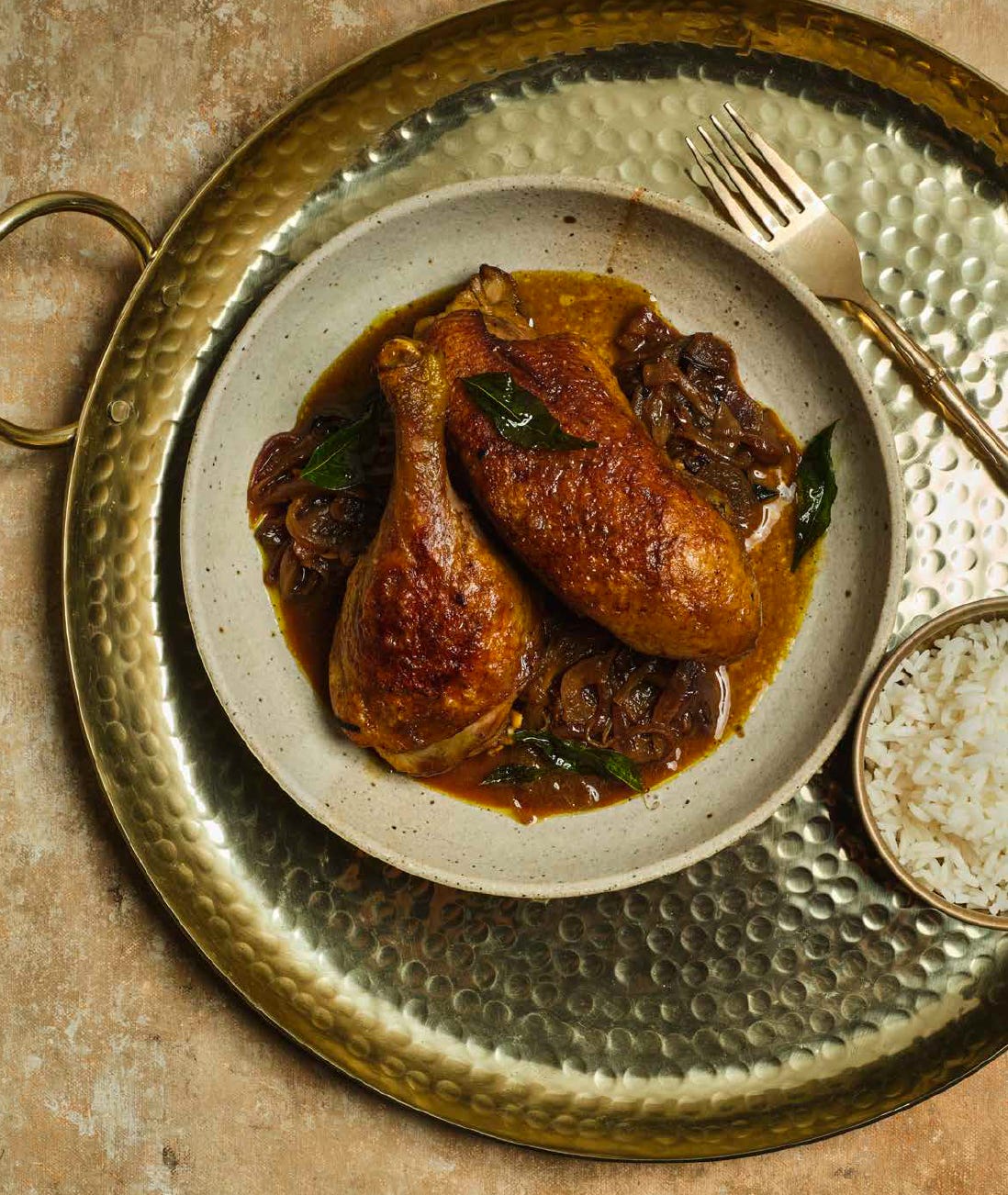A Recipe for Tharavu Roast
A rich, flavorful delicacy from Kerala's Syrian-Christian community
The recipe box is a collection of recipes and techniques from my favorite cookbooks—everything from up-and-coming titles to tried-and-true favorites from my collection. (Though you may see some original recipes here from time to time, too 😉) You can check out TOD’s archive of past recipes here if you’re looking for some meal inspiration.
**Just as a heads up: some of the links in this post are affiliate links, meaning I’ll earn a small commission at no extra cost to you if you decide to purchase the amazing books, ingredients, etc. through them. Thank you ever so much in advance for your support of this newsletter ❤️
Through years of trade, the rise and falls of empires, religious and cultural shifts, and influences from migrations and colonialism, food in India has always evolved alongside its history. In the pages of “The Food of Bharat,” an impressive deep-dive into India’s culinary heritage, Helly Raichura (the chef and owner of Melbourne’s Enter Via Laundry) traces that journey through time with deep reverence and curiosity. Bharat is the oldest-known name of the subcontinent now called India, and Helly’s recipes chart a course through thousands of years of food culture—from the age of the Indus Valley Civilization to an era of influential trade and migration during the “Golden Era of India,” and from the Mughal invasion to the British raj.
Today, we’re taking it back to (approximately) AD 52, when St. Thomas the Apostle arrived in Kerala via the robust trade routes to the tropical Malabar coast with the goal of spreading Christianity. A unique community emerged as a result of his ministry—comprising the local Brahmins who had converted to the faith and a few hundred Syrian-Christians who had traveled with St. Thomas—and, with that, a distinctive cuisine that embraces flavorful, richly-spiced seafood, poultry, and lamb dishes and other techniques popular in Malabar cuisine.
Below, you’ll find a recipe for tharavu roast, a dish that holds a cherished place in Kerala’s rich culinary heritage. Duck meat is cooked down, low and slow, in a masala-spiced liquid until it reduces down to a gravy that clings to the meat and is perfect for serving over rice or appam (thin, lacy pancakes made with a fermented rice batter). It’s one of the most popular dishes to have during special occasions and holidays like Christmas and Easter, in addition to a testament to the community’s penchant for spice-forward fare.
This Friday, paid subscribers will be receiving a bonus recipe from “The Food of Bharat” in their inboxes. If you’ve been enjoying content from “That One Dish,” please do consider upgrading your subscription. This is a reader-supported publication first and foremost, and it’s paid readers who keep this operation running!
Serves 4-5
1 (4-pound, 6-ounce) duck
2 tablespoons ground turmeric
5-6 green cardamom pods
1 cassia bark stick
4 whole cloves
1 (¾-ounce) piece fresh ginger, grated
1 ounce garlic cloves, peeled
2 curry leaf sprigs, leaves stripped
1 tablespoon ground black pepper
3 tablespoons malt vinegar
¾ cup vegetable oil
1 pound, 12 ounces shallots, thinly sliced
Portion the duck into wings, thighs, and breasts. Rub with the turmeric and set aside.
For the masala, toast the cardamom pods, cassia bark, and whole cloves in a dry frying pan over a low heat until fragrant, then grind the spices to a fine powder along with the ginger, garlic, curry leaves, black pepper, vinegar, and a pinch of salt.
Place the duck pieces in a deep pot and fill it with lukewarm water until the duck is almost completely submerged. Add the masala paste and mix it well. Place the pot over medium heat and cook until the duck is soft and the liquid has reduced by half, stirring periodically—this should take about 15 minutes.
Remove the duck pieces and pat them dry with a paper towel, then set aside and allow them to come to room temperature.
Place the pot containing the liquid back over low heat and cook until the gravy coats the back of a spoon, about 10-15 minutes.
Heat the oil in a frying pan over medium heat and fry the shallots until golden brown. Remove the shallots, keeping the excess oil in the pan, and add them to the gravy.
Place the frying pan with the remaining oil back over medium heat and fry the duck pieces to caramelize the skin evenly all over. Once fried, return the duck pieces to the gravy. Taste and adjust the seasoning, if needed, then cook for another 5 minutes over medium heat.
Serve with rice.
Recipe adapted from “The Food of Bharat: A Chef's Journey Through India's Rich Culinary History” by Helly Raichura Copyright © 2025. Used with permission of Hardie Grant Books. All rights reserved.





